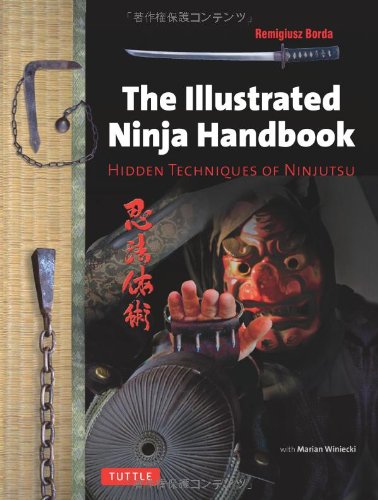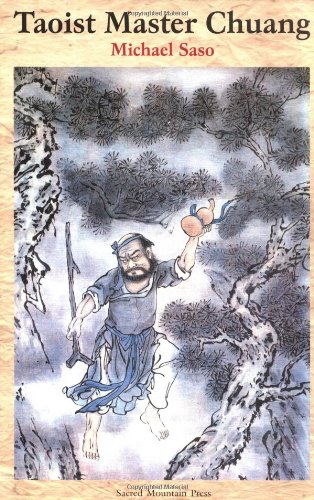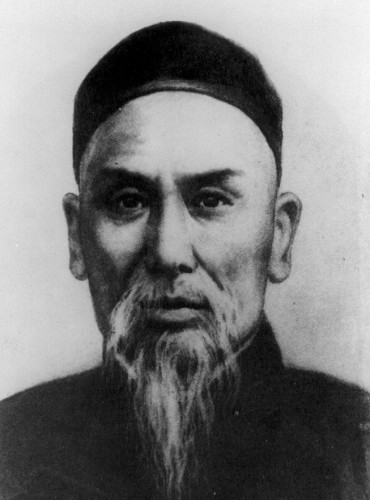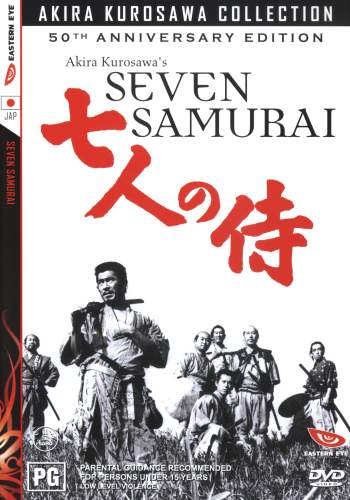Home › Forum Online Discussion › Practice › Text on Yiquan (Standing in Stillness Postures)
- This topic has 8 replies, 4 voices, and was last updated 8 years, 6 months ago by
c_howdy.
-
AuthorPosts
-
September 1, 2016 at 3:57 am #47091
Michael Winn
KeymasterSeptember 2, 2016 at 8:51 am #47092rideforever
ParticipantZZ which I have been doing a lot recently due to a movement-impairing-injury is a very pure exercise, it is a final exercise.
It points to complete merger with the source. And this is only learnt by learning directly from the source.
Mystical texts like this one arise from people who have done the training, those who have dug a deep well until such poetry flows out.
But in order to enter the same state yourself you must not concern yourself too much with the poetry, but with the digging.
Are we not ready to learn from the source?
How? Where is the teacher? What am I meant to do? How can I start?
That is fear of the unknown. One must try, that is all. Try.
And isn’t it the unknown that you wish for?
It is only the unknown that is alive.All these questions are not answered by following a human teacher. The human teacher is simply a scaffold until you are listening to the source. And one can invest too much in that scaffold until one finds that one dies of old age and all you have is the scaffold. You haven’t even begun and now it’s too late. For the whole point of this kind of training is to reach the source.
Some talk of power, of defeating enemies and strength. To what end? You and your foe are all going to be fertilizer in a few years, forgotten bones. No-one will even think of your existence or your name or remember your face.
What good is your strength then? You have invested too much in your temporary little body and misunderstood. To “win” you only need to learn BJJ then you can kill anyone if that is all you wish from life.
I found some interesting practical videos here:
Yiquan training at Cui Rui Bin training centre
Zhan Zhuang 10 day guided training Lam Ken Chuen
Taikiken kihon, complete set of basic movements (Japanese style)
How Wang Xiangzhai taught me ZZ by Yu Yongnian
 September 8, 2016 at 3:57 am #47094
September 8, 2016 at 3:57 am #47094Steven
ModeratorThe nice thing about such things is that it can inspire one to actually practice.
The bad thing about such things is that folks can spend time reading about the practice, rather than actually doing it, and it becomes an avoidance tactic.But as a supplement, good stuff.
Thanks for sharing.S
October 31, 2016 at 7:23 am #47096c_howdy
Participant…as a supplement…
But there are some really good martial arts books.
This is one of those.
https://www.amazon.com/Illustrated-Ninja-Handbook-Techniques-Ninjutsu/dp/4805313056/
http://www.amazon.com/Illustrated-Ninja-Handbook-Techniques-Ninjutsu/dp/4805313056
 November 16, 2016 at 5:51 am #47098
November 16, 2016 at 5:51 am #47098c_howdy
ParticipantOne of Japan’s most feared yakuza has renounced violence and found Buddhism. A genuine conversion? Or a desperate attempt to avoid assassination at the hands of his enemies? David McNeill reports…
-http://www.independent.co.uk/news/world/asia/gangster-boss-who-turned-to-god-1666851.htmlOur Tate No Kai was nurtured by the Self-Defense-Forces. In fact, one could say the Self-Defense-Forces has been a father and an elder brother to us…We have been treated within the Self-Defense-Forces as quasi-members…and we have been receiving training without any strings attached.
-三島 由紀夫 (MISHIMA YUKIO)From now until the year 2000, a series violent phenomena filled with fears that are too difficult to describe will occur. Japan will turn into wasteland as a result of a nuclear kweapons attack. An alliance centering on the United States will attack Japan.
-麻原 彰晃 (ASAHARA SHOKO)…and had collapsed from his severe injuries. He was rescued by a Taoist sage known by the epithet Kasumi-gakure-“Hiding in the mist”-and escaped with him to the mountains of Iga. In time the sage accepted him as his student and trained him in the martial ways of ninjutsu…
-初見良昭 (HATSUMI MASAAKI), The Way of the NinjaI don’t know that followers of Mo Pai or the other violent traditions you cite are following the principles laid out in the Tao Te Ching and–if you want to extend larger–the Dao Canon. If you feel they are, please cite your references.
-http://forum.healingtaousa.com/general/message/27066/Sorry for my broken English.
Oral tradition is the ultimate source for authority in this respect.
If one doesn’t want to buy Saso’s book, it should be easy to find from local university library.
It’s very nice and informative ethnographical work.
There is also interesting link with Tendai Buddhism which Saso has also studied in the field.
HOWDY
http://www.rumisgarden.co.uk/uploads/5/2/0/7/52071889/daoist-master-zhuang_orig.jpg
http://www.amazon.com/Taoist-Master-Chuang-Michael-Saso/dp/0967794803
 November 18, 2016 at 8:24 am #47100
November 18, 2016 at 8:24 am #47100c_howdy
ParticipantTai Chi is a specific type of qigong that must satisfy three traits for it to actually be Tai Chi.
1. Body structure and connection to the ground is important.
2. Movements change in a sequence, rather than a single movement in repetition.
3. Every movement must have a hidden martial arts application.
-http://forum.healingtaousa.com/general/message/27088/I don’t know that followers of Mo Pai or the other violent traditions you cite are following the principles laid out in the Tao Te Ching and–if you want to extend larger–the Dao Canon. If you feel they are, please cite your references.
-http://forum.healingtaousa.com/general/message/27066/Sorry for my broken English.
Was it, because the master didn’t find scriptural confirmation or I Ching consultation wouldn’t allow, that he didn’t accept the challenge?
HOWDY
The Complete Book of Tai Chi Chuan: A Comprehensive Guide to the Principles and
Practice by WONG KIEW KITOne day kung fu expert came to challenge the master, Chen Chang Xin. His son and best disciple took the challenge but were badly defeated. The challenger asked to meet the master. Chen’s students told him that the master was away. But the challenger was determined to meet the master; he put up in a local hotel and came back every three days to seek him. This went on for few months. The Chen family was desperate; there was no way, it seemed, that they could overcome this embarrassing situation.
One day, the challenger came and said as usual, ‘I am here for a friendly challenge.’
‘I’m sorry, Sifu, our master has not returned from his trip,’ one of the senior students said.
‘Then, I’ll come again in three days’ time.’
But before the challenger walked away as usual, a servant came forward and to everybody’s surprise said:
‘Sir, I have also practiced some Chen-style Tai Chi Chuan. I am not very good at it and would be honoured if you would kindly teach me.’ The servant of course was Yang Lu Chan.
They were even more surprised when Yang Lu Chan, using genuine Chen-style Tai Chi Chuan, defeated the challenger. But defeating a challenger was one thing; upholding the Chen family discipline was another. ‘Stealing’ a secret martial art was an extremely grave offense, punishable by death…http://www.youtube.com/watch?v=gA_Oe0li3I4
 November 24, 2016 at 1:34 am #47102
November 24, 2016 at 1:34 am #47102c_howdy
Participant‘Cause I’m a freak
Yeah, I’m a freak
‘Cause I’m a freak
Yeah, I’m a freak
-ENRIQUE IGLESIAS…a bit off-topic for this forum…
-http://forum.healingtaousa.com/general/message/27256/Not, not at all necessarily.
It’s not because one might be urban dweller, because it’s same with rural people, if one’s physical activities are quite limited.
One should regard this parkour thing with complete ninja skills in mind.
Sorry for my broken English.
HOWDY
…and had collapsed from his severe injuries. He was rescued by a Taoist sage known by the epithet Kasumi-gakure-“Hiding in the mist”-and escaped with him to the mountains of Iga. In time the sage accepted him as his student and trained him in the martial ways of ninjutsu…
-初見良昭 (HATSUMI MASAAKI), The Way of the Ninjahttp://phys.org/news/2016-11-parkour-athletes-energy-demands-tree.html
(Phys.org)A team of researchers with the Universities of Roehampton and Birmingham in the U.K. has found a unique way to measure the energy spent by tree-dwelling apes when faced with gaps in a jungle canopy. In their paper published in the journal Biology Letters, the team describes how they created an artificial canopy and enlisted the assistance of parkour athletes to find out how the different approaches to dealing with canopy gaps compared.
Living in the trees can sometimes require the expenditure of enormous amounts of energy, particularly when attempting to move between trees when there is a gap. An ape, such as an orangutan, must size up the situation and make a decisiontry to jump, to swing across, or climb down to the ground and then climb up the other tree. Factors at play include the gap distance, fear of falling, estimated strength of the branches and the size of the ape. The researchers wondered if energy expenditure might also play a roleafter all, the more energy an ape uses in getting around, the more food it must obtain and consume.
Figuring that it was likely impossible to measure the amount of energy being used by real apes in their natural environment the researchers looked for a viable substitute and found parkour athletes.
Parkour athletes are people who engage in moving around in urban environments without using any equipmentthey jump from building to building, climb walls and do whatever comes to them as they attempt to get from one place to another. Similar in many respects, the researchers noted, to the behavior of apes up in the trees.
To test the energy requirements of dealing with canopy gaps the researchers created artificial tree branches from fiberglass poles and vines using ropes and ladders. They then fitted each of 28 athletes with a mask that allowed for monitoring oxygen intakea measure of energy use. The researchers than had the athletes engage in a variety of activities meant to simulate the various actions an ape might take when faced with a gap.
In studying the data, the researchers found that climbing down and back up consumed the most energy by farthe energy requirements for jumping or swinging, on the other hand, were much more complicated. It depended on how stiff the branches were, the distance of the gap, number of sways needed and how big the athletes were.
The findings by the team offer some possible explanations regarding why some apes spend more time on the ground than others and perhaps why human ancestors abandoned tree-dwelling altogether.http://www.youtube.com/watch?v=-2QNubqriLM
 November 28, 2016 at 5:08 am #47104
November 28, 2016 at 5:08 am #47104c_howdy
ParticipantI don’t know that followers of Mo Pai or the other violent traditions you cite are following the principles laid out in the Tao Te Ching and–if you want to extend larger–the Dao Canon. If you feel they are, please cite your references.
-http://forum.healingtaousa.com/general/message/27066/…the village of Beipingao in Wen County (Wenxian) is famous for the beauty of its bamboo forest. At the time of the events that are about to unfold, the population of several thousand enjoyed a certain degree of wealth and prosperity and lived contentedly.
It was just before the lunar new Year, when all the families were gathered in preparation for the festivities. Unnoticed by the residents, a group of bandits slipped into the village, led by two brothers who were particularly repulsive in appearance. They were “Flying Centipede” (Li Jiang) and “Poison Scorpion” (Li Her). As soon as they entered, the leaders commanded their men to seal off the village, guarding strategic vantage points to ensure that nobody could leave or enter. The brothers ordered the villagers to hand over all their valuables, and also to gather all their presentable maidens so they could be selected as the wives of the bandits. The villagers were informed that the punishment for anyone defying these orders would be the execution of their entire family.
During the quiet of the night, all the village elders and the menfolk, led by a man named Wang, held a meeting to find a solution to their predicament. However, despite much discussion, they could arrive at no practical solution. Just as all started to despair, a young woman who had been present to serve the menfolk tea stepped forward, stating that she might have an answer. She had recently married into the village from the nearby village of Chenjiagou. At this time, a woman’s view would rarely have been solicited, but because of the urgency of the situation, she was encouraged to speak.
The woman, whose surname was Chen, informed those gathered that her family had a long history of martial arts, starting from the first-generation descendant Chen Bu. The present ninth-generation leader chen Wangting, having devised the new art of Taijiquan, had incited a new wave of enthusiasm for martial arts in the village. Most of the young men in Chenjiagou practiced martial arts, and even the women were taught. With this, the young woman suggested that help should be sought from her home village. When no one was brave enough or strong enoug to offer to fight through the bandits guarding the village, the young woman volunteered. Armed with a sword, she killed the two bandits guarding the eastern aspect of the village with ease and sped through the winter night until she arrived at the home of her father, Chen Soule…
-DAVIDINE SIM & DAVID GAFFNEY, Chen Style Taijiquan: The Source of Taiji Boxinghttp://www.youtube.com/watch?v=bBfgNpSQm3I
 November 28, 2016 at 5:50 am #47106
November 28, 2016 at 5:50 am #47106c_howdy
ParticipantAcala (Sanskrit: “immovable”) is a dharmapala primarily revered in Vajrayana Buddhism. He is a protective deity particularly in Shingon traditions of Japan where he is known as Fudō Myōō, in Tangmi traditions China, in Nepal and Tibet as Candarosana, and elsewhere in Tantric Buddhism.
-https://en.wikipedia.org/wiki/AcalaYakuza (ヤクザ?, [jaꜜkuza]), also known as gokudō (極道?), are members of transnational organized crime syndicates originating in Japan. The Japanese police, and media by request of the police, call them bōryokudan (暴力団?, “violent groups”), while the yakuza call themselves “ninkyō dantai” (任侠団体 or 仁侠団体?, “chivalrous organizations”). The yakuza are notorious for their strict codes of conduct and organized fiefdom-nature. They have a large presence in the Japanese media and operate internationally with an estimated 102,000 members.
-https://en.wikipedia.org/wiki/YakuzaI don’t know that followers of Mo Pai or the other violent traditions you cite are following the principles laid out in the Tao Te Ching and–if you want to extend larger–the Dao Canon. If you feel they are, please cite your references.
-http://forum.healingtaousa.com/general/message/27066/…Chen Soule was of the tenth generation of the Chen clan, a nephew of Chen Wangting. He was taught by Chen Wangting and was highly skilled in the family system. Besides the daughter who now lived in Beipinggao, he had twin sons who who, at the time of the story, were about sixteen years of age. They were Chen Shenru and Chen Xunru, nicknamed “Big Sky God” and “Little Sky God.” Both were already proficient in the martial arts, having been taught by their father and supervised by Chen Wangting.
Upon hearing about the plight of Beipingao, the two young brothers volunteered to return with their sister to rid the village of the brigands. After consulting with Chen Wangting and getting his endorsement, the three siblings set off. That evening, the brothers surprised the bandits, as they were not expecting any resistance. The twins were heavily outnumbered, but nevertheles dealt with the bandits in one fell swoop. The two bandit leaders were defeated and slain…
-DAVIDINE SIM & DAVID GAFFNEY, Chen Style Taijiquan: The Source of Taiji Boxinghttp://www.youtube.com/watch?v=qeWfPTCMCTo

-
AuthorPosts
- You must be logged in to reply to this topic.
